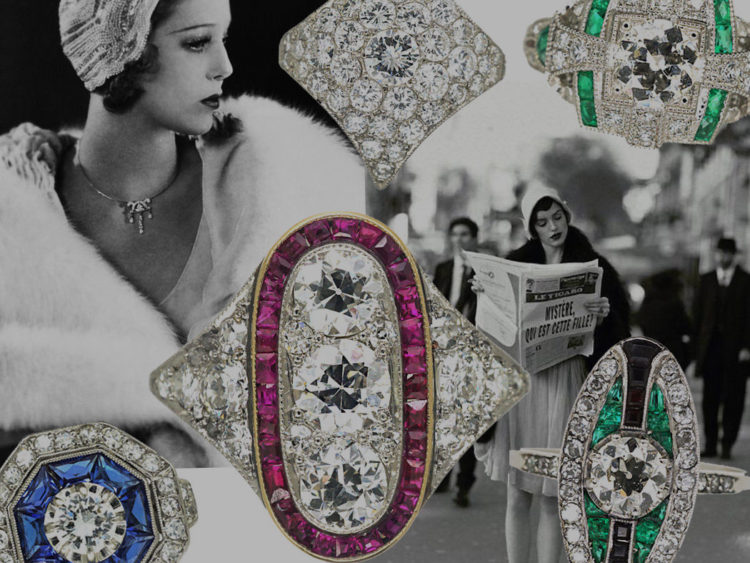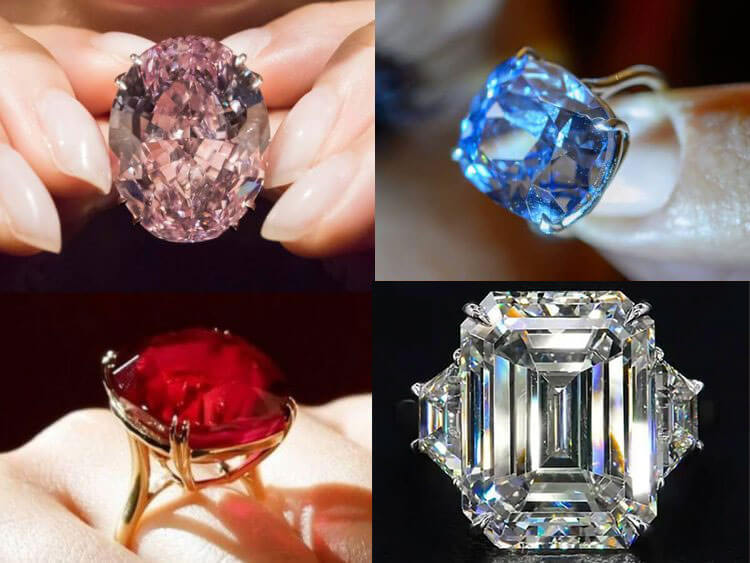-

Your Shopping Bag is empty
Romancing the Gypsy Ring: An Antique Affair to Remember

Gypsy rings get their name from the luck associated with the star setting around the stone. A Gypsy setting is whereby the gemstone is sunk into its mount with the table facet flush with the mount surface. There are usually between one and five stones set in the ring. It was a very popular setting in Victorian times. The rings are most commonly set with diamonds however we also see these rings with many different coloured gemstones.
These rings have a romantic meaning behind them, alongside being lucky, the star setting is a message to say ‘you are the star of my life’. A beautiful gift for a loved one.
Today, they are admired for their subtle sophistication unlike over-the-top modern designs that sit proudly off the finger, they allow a large stone to be set in a bold surround while remaining understated. Often featuring old cut diamonds, they scintillate intensely under glimmering candle light, rather than the glassy bright white sparkle of more contemporary cuts under bright spotlights.
They’re a practical setting for our busy lifestyles too, the diamond is well protected from knocks and scrapes, and are especially convenient for the current hygiene measures of constant hand washing it is harder for soap to get stuck under the gemstones and dull their sparkle.

They are becoming more common as engagement rings. Although this was not the original purpose of Gypsy rings, their practicality, stylishness and simplicity of these rings mean that they are a perfect option for a ring to never take off. They are also great for stacking, wedding bands eternity bands and even other gypsy rings look great next to these 140 year old treasures.
Greetings, jewellery aficionados! Today, we are setting our sights on a bewitching style that has charmed centuries and cultures alike – the gypsy ring. Let’s meander through its fascinating history, discover what sparked its popularity, uncover its symbolism, and explore why these vintage treasures are so prized today. Buckle up for an enchanting journey!
Gypsy Rings: A Time-Honoured Tale
Gypsy rings, also known as gypsy-set rings, date back to the Victorian era, when Queen Victoria’s reign sparked countless fashion trends, many of which focused on sentimental and symbolic jewellery. Despite the name, gypsy rings do not originate from Roma culture. The term ‘gypsy’ instead refers to the style of setting used in these rings, where the gemstone is ‘wandering’ or embedded into the band, creating a smooth and flush surface.
Initially, gypsy rings were often used as betrothal rings. The design was appealing for its practicality, as the flush setting protected the precious gemstones from damage – perfect for active Victorians who didn’t wish to sacrifice style for their bustling lives.
The Allure of the Gypsy Ring: Simple, Sturdy, Sentimental
The charm of gypsy rings lies in their simplicity, durability, and sentimentality.
- Simplicity: The gypsy ring’s design is elegantly simple. It features a wide band, usually crafted of gold, with a gemstone or diamond embedded directly into the metal. This simplicity gives the ring a timeless appeal that crosses cultural and stylistic boundaries.
- Durability: Thanks to the gemstone’s flush setting, gypsy rings are sturdy and resilient. This practical design made them an ideal choice for people leading active lifestyles in the Victorian era and continues to attract wearers today.
- Sentimentality: Gypsy rings often carry sentimental value. Given their history as betrothal rings, they symbolise commitment and enduring love. Plus, the Victorians loved embedding secret messages and symbols into their jewellery, adding an extra layer of intrigue.
Symbolism: Sealed with Love and Luck
Gypsy rings carry rich symbolism. The embedded stones are not merely decorative but carry specific meanings. During the Victorian era, different gemstones were believed to convey different sentiments. For instance, a diamond symbolised eternal love, a ruby conveyed passion, and a sapphire represented wisdom and virtue.
Additionally, many gypsy rings include the popular ‘good luck’ symbols of the Victorian era, such as horseshoes, stars, and clovers, enhancing the charm and allure of these unique pieces.
Why Gypsy Rings are Highly Collectable Today
Gypsy rings have become highly sought-after items for antique jewellery collectors, and here’s why:
- Historical Value: Each gypsy ring offers a glimpse into the past. The materials used, the symbols engraved, and the gemstones chosen all tell a story about the era in which the ring was created.
- Unique and Timeless Design: The design of gypsy rings strikes a balance between simplicity and sophistication, making them suitable for a range of tastes and styles.
- Durability: Their sturdy design, with gemstones protected by a flush setting, ensures these rings can withstand the rigours of daily wear, making them a practical as well as a beautiful choice.
- Symbolic Resonance: The symbolic elements of gypsy rings add an additional layer of appeal, making them not just beautiful objects, but carriers of meaningful messages and sentiments.
Conclusion: The Timeless Appeal of the Gypsy Ring
Gypsy rings, with their elegant simplicity, robust design, and rich symbolism, have truly stood the test of time. From Victorian betrothal rings to modern fashion statements, they continue to captivate with their understated charm and historical resonance. So, if you’re looking to add a piece of history, style, and sentiment to your jewellery box, you might want to set your sights on a gypsy ring. Happy collecting, dear readers!
-
 Victorian 18ct Gold Emerald and Diamond Ring with Square Mounts
Victorian 18ct Gold Emerald and Diamond Ring with Square Mounts -
 Edwardian 18ct Gold & Diamond Gypsy Ring
Edwardian 18ct Gold & Diamond Gypsy Ring -
 Victorian 18ct Gold, Three Stone Diamond Gypsy Ring
Victorian 18ct Gold, Three Stone Diamond Gypsy Ring -
 Victorian 18ct Gold, Three Stone Diamond Gypsy Ring
Victorian 18ct Gold, Three Stone Diamond Gypsy Ring -
 Edwardian 18ct Gold, Sapphire & Diamond Gypsy Scroll Design Ring
Edwardian 18ct Gold, Sapphire & Diamond Gypsy Scroll Design Ring -
 Edwardian 18ct Gold & Diamond Gypsy Scroll Design Ring
Edwardian 18ct Gold & Diamond Gypsy Scroll Design Ring -
 Edwardian 18ct Gold & Diamond Gypsy Ring
Edwardian 18ct Gold & Diamond Gypsy Ring



 Free Worldwide Delivery
Free Worldwide Delivery View All
View All
 Diamond
Diamond
 Sapphire
Sapphire
 Emerald
Emerald
 Ruby
Ruby




























